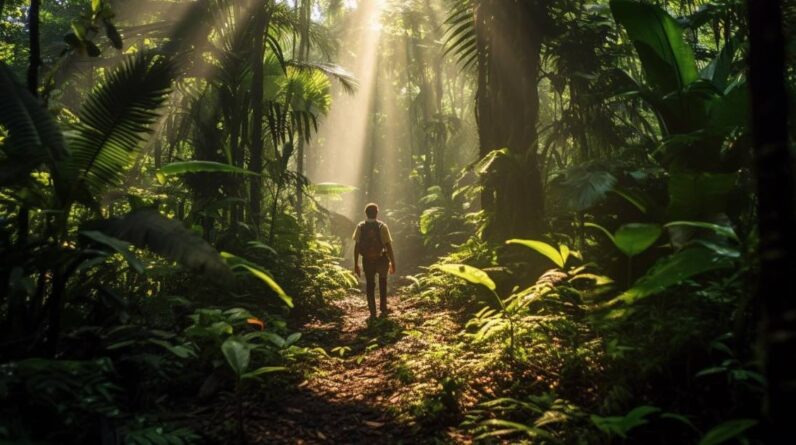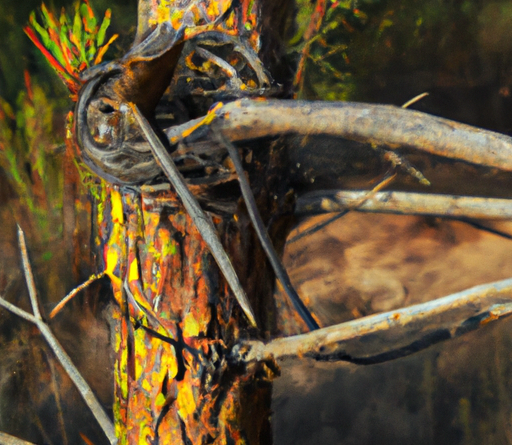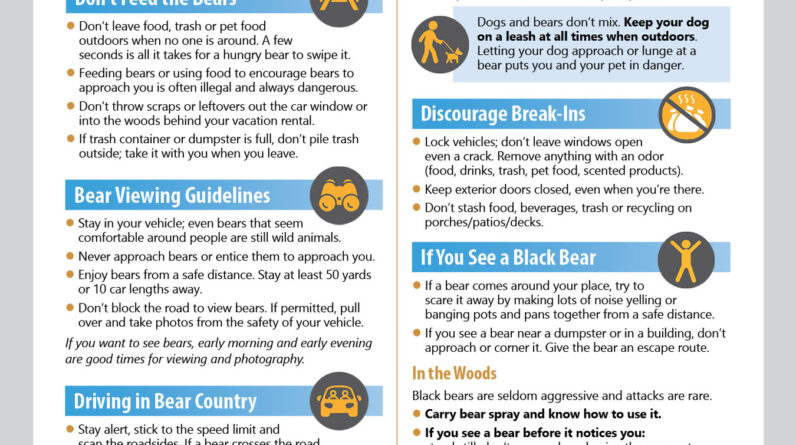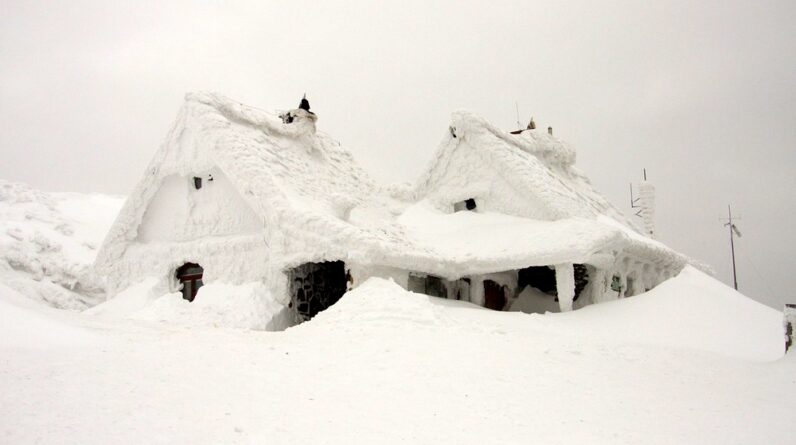
Introduction
Welcome to “Surviving Arctic Blizzards: Strategies for Extreme Cold Weather.” In this article, we will explore the importance of survival strategies in extreme cold weather conditions, specifically focusing on the challenges faced in Arctic blizzards.
Importance of survival strategies in extreme cold weather
When facing the brutal conditions of an Arctic blizzard, it is crucial to be prepared with effective survival strategies. These extreme weather events can pose significant threats to your well-being and even your life. Therefore, equipping yourself with the necessary tools and knowledge can make all the difference in ensuring your survival.
Challenges faced in Arctic blizzards
Arctic blizzards are characterized by intense winds, freezing temperatures, and reduced visibility due to snowfall. These conditions can quickly become life-threatening, as they can lead to frostbite, hypothermia, and disorientation. Additionally, Arctic blizzards often occur in remote areas, making rescue missions difficult or even impossible. Therefore, it is essential to have a solid understanding of the challenges you may encounter in order to effectively overcome them.
By the end of this article, you will have a comprehensive understanding of the strategies and techniques necessary to survive an Arctic blizzard. So, let’s delve into the details of surviving extreme cold weather and increase your chances of making it out safely. Stay tuned for more valuable insights that could save your life.

Understanding Arctic Blizzards
Arctic blizzards are weather phenomena characterized by intense snowfall, strong winds, and bitterly cold temperatures. These extreme weather events pose significant challenges for those living or traveling in the Arctic regions. To survive Arctic blizzards, it is crucial that you understand their definition, characteristics, causes, and frequency.
Definition and Characteristics of Arctic Blizzards
Arctic blizzards are winter storms that occur in the Arctic region and are marked by heavy snowfall, typically accompanied by winds exceeding 35 mph. These blizzards can last for several hours or even days, making visibility extremely poor and trapping individuals in their icy grip. With temperatures dropping to frigid levels, the wind chill factor can reach perilous levels, posing a great risk to life and limb.
Causes and Frequency of Arctic Blizzards
Arctic blizzards result from a combination of factors, including the collision of different air masses with varying temperatures and humidity levels. When cold air from the Arctic clashes with warm air masses from lower latitudes, it creates a prime condition for blizzard formation. These extreme weather events are not uncommon in the Arctic region, where they can occur throughout the winter months.
To survive an Arctic blizzard, it is essential to be aware of the warning signs, prepare adequately, and have the necessary supplies on hand. By understanding the definition, characteristics, causes, and frequency of Arctic blizzards, you can better equip yourself for these treacherous winter storms. Stay tuned for our next section on essential survival strategies for extreme cold weather.
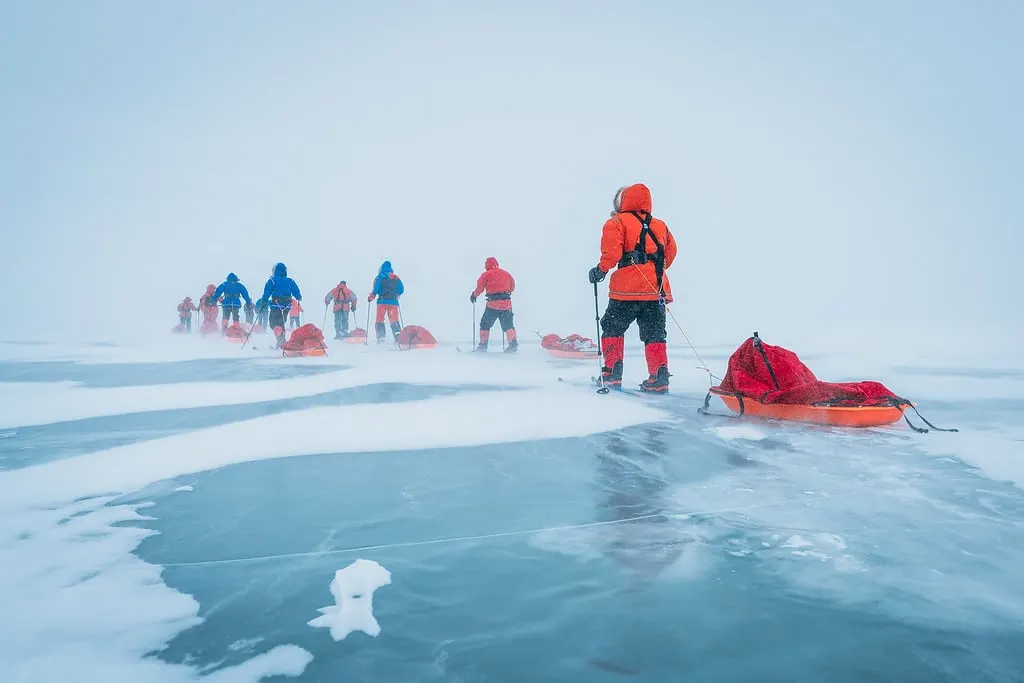
Preparing for Arctic Blizzards
Building a resilient shelter
When facing the harsh conditions of an Arctic blizzard, one of the foremost priorities is finding or constructing a sturdy and dependable shelter. A well-built shelter can provide protection against the biting cold, strong winds, and heavy snowfall. Consider finding a natural, wind-blocking feature, such as a large rock formation or a thick tree line, to serve as the foundation of your shelter. Use materials like snow blocks or branches to create walls, ensuring they are tightly packed to prevent wind from penetrating. Constructing a low-ceiling and narrow entrance will also help retain heat and barricade against the freezing gusts. Remember, the efficiency and durability of your shelter can make a significant difference in your survival.
Stocking up on essential supplies
Preparing for an Arctic blizzard means anticipating extended periods of isolation and limited resources. It is crucial to gather ample food supplies, focusing on high-energy, non-perishable items. Include items like energy bars, dried fruits, nuts, and canned goods. Additionally, store plenty of water or consider melting snow as your primary water source. It is prudent to bring a reliable heat source, such as a portable stove or a box of waterproof matches, to maintain warmth and cook food. Other essential supplies for surviving the blizzard include a first aid kit, flashlight with extra batteries, emergency blankets, and a radio to stay updated on the weather conditions.
Preparing appropriate clothing and gear
In extreme cold weather, proper clothing and gear can be lifesaving. Layering your clothing is key to trapping warmth and regulating body temperature. Start with a base layer of moisture-wicking material, followed by insulating layers such as fleece or down jackets. Investing in a waterproof and wind-resistant outer layer is vital to shielding yourself from moisture and the chilling gusts. Ensure you have sturdy, waterproof boots with good traction to prevent slips and falls on icy surfaces. It is crucial to protect your extremities as well, so don’t forget to wear thermal gloves, a warm hat, and a scarf to cover your face. Additionally, bring essential gear like hand warmers, ski goggles to protect your eyes from snow blindness, and a sturdy backpack to carry your supplies.
Remember, surviving an Arctic blizzard requires careful planning and preparation. By building a resilient shelter, stocking up on essential supplies, and equipping yourself with appropriate clothing and gear, you can increase your chances of weathering the extreme cold weather conditions. Stay safe and stay warm!
Navigating through Arctic Blizzards
Utilizing landmarks and compass for guidance
When you find yourself caught in an Arctic blizzard, the first and most important step to ensuring your survival is knowing how to navigate through the treacherous conditions. One effective method is by utilizing landmarks and a compass for guidance. Even in the midst of a blizzard, familiarizing yourself with key landmarks can be crucial in maintaining your sense of direction. These can be natural formations such as mountains or distinctive man-made structures. However, in a whiteout, where visibility is severely limited, relying solely on visual landmarks may not be possible. This is where a compass becomes a vital tool. By consistently referencing your compass and keeping track of your intended direction, you can maintain a general sense of your location and avoid getting disoriented in the blizzard.
Creating and following a travel plan
Another essential strategy for navigating through an Arctic blizzard is to create and follow a detailed travel plan. Before embarking on any journey in such harsh conditions, it is crucial to plan your route carefully. Take into consideration factors such as elevation, wind direction, and snow drifts. By identifying potential hazards, you can make informed decisions about the safest path to take. Additionally, ensure that someone else is aware of your travel plan, including your intended destination and estimated time of arrival. This way, if an emergency arises, help can be sent promptly.
Avoiding dangerous hazards in blizzard conditions
Arctic blizzards bring forth numerous hazards that can prove to be life-threatening. One of the most perilous dangers is the risk of becoming trapped in a snowdrift. These deep, soft mounds of snow can envelop you within seconds, making it nearly impossible to escape without assistance. To minimize this risk, always stay on known trails or established routes, avoiding areas prone to drifting snow. Furthermore, be cautious of hidden crevices or bodies of water, as the snow covering them may not be stable. Falling into such hazards can lead to hypothermia or worse. Maintaining situational awareness and exercising caution at all times is paramount to your survival.
when faced with an Arctic blizzard, navigating through the extreme conditions requires careful planning and adaptability. By utilizing landmarks and a compass, you can maintain your sense of direction even in low visibility. Creating and following a travel plan ensures you make informed decisions about the safest route. Finally, by avoiding dangerous hazards and remaining vigilant, you can increase your chances of surviving this harsh and unforgiving environment. Remember, preparation and knowledge are your greatest allies in overcoming the challenges of Arctic blizzards. Stay safe and be well-prepared.

Survival Techniques in Extreme Cold
When facing an Arctic blizzard, it is of utmost importance to be prepared with effective survival strategies. The extreme cold weather can present numerous challenges, but with the right knowledge and preparation, you can increase your chances of survival. In this section, we will discuss essential techniques for generating and conserving heat, finding and purifying water sources, and obtaining and preserving food.
Generating and Conserving Heat
In extreme cold, your body’s ability to retain heat becomes crucial. Start by constructing a well-insulated shelter using natural materials such as snow or ice blocks. Additionally, layer your clothing to trap warmth close to your body, and remember to wear a waterproof outer layer to protect against moisture. In terms of heating, starting a fire can provide crucial warmth, but ensure you have sufficient fuel and a well-ventilated area. Lastly, consider using hot water bottles or hand warmers to keep your extremities warm during the night.
Finding and Purifying Water Sources
In Arctic conditions, locating a reliable water source can be challenging. Look for areas where ice or snow has accumulated, as it can be melted and consumed. However, always purify the water to avoid ingesting harmful pathogens. Boiling the water is the most effective method, but if resources are limited, chemical water treatment tablets or filters can be used.
Obtaining and Preserving Food
When stranded in extreme cold, finding and preserving food becomes vital for survival. Look for wildlife tracks or signs of animal activity, as this indicates potential food sources. Trapping animals or fishing in ice-covered lakes can provide sustenance. Preserve any excess food by freezing it or storing it in airtight containers within snowbanks. Be cautious when consuming unfamiliar plants or animals to avoid possible poisoning.
By following these survival techniques, you can increase your chances of enduring an Arctic blizzard. Remember to stay calm, assess your situation carefully, and make rational decisions. The extreme cold may be daunting, but with the right strategies, you can prevail.
Emergency Situations and Rescue
When encountering an Arctic blizzard, it is crucial to be well-prepared for emergency situations and aware of potentially life-saving rescue strategies. In this section, we will explore some key techniques to increase your chances of survival and ensure you are visible to potential rescuers.
Creating distress signals
In the unfortunate event of being stranded in an Arctic blizzard, it is essential to communicate your distress position effectively. By creating distress signals, you can alert nearby rescuers to your location. International distress signals, such as waving a brightly colored flag or flashing a mirror, can greatly enhance your visibility and attract attention even in whiteout conditions. Additionally, using an audible signaling device, such as a whistle, can help rescuers locate you in the midst of the storm.
Constructing emergency snow shelters
When facing extreme cold weather, constructing proper emergency snow shelters can be the difference between life and death. Utilize the terrain and available resources to build a snow cave or snow trench, which can provide insulation and protection against the chilling wind. Ensure you have a solid roof and well-insulated walls to retain heat and minimize heat loss inside the shelter. Additionally, lining the floor with insulating materials, such as pine branches or spare clothing, can further enhance warmth.
Remaining visible and attracting attention
Maintaining visibility in Arctic blizzards is crucial for rescue teams to locate you swiftly. Wear brightly colored clothing and attach reflective materials to your gear to increase your visibility in the white landscape. Carrying a signal flare or a handheld smoke canister can be a valuable tool for attracting attention. Periodically light the flare or release the smoke to create a visible signal and guide rescuers towards your location.
Remember, in emergency situations during Arctic blizzards, remaining calm, conserving energy, and implementing proper rescue techniques are vital to increasing your chances of survival. Stay alert, follow safety guidelines diligently, and remain proactive in attracting attention to aid your timely rescue.
Maintaining Mental and Physical Health
Surviving an Arctic blizzard requires not only physical strength and resilience but also mental fortitude. The extreme cold temperatures and isolation can take a toll on your mental and emotional well-being. Here are some strategies to help you maintain your mental and physical health during these challenging times.
Coping with isolation and loneliness
Isolation is a prominent challenge faced in extreme cold weather conditions. The feeling of being cut off from the outside world can be overwhelming. To cope with this, it is essential to establish a routine and stick to it. Having a daily schedule with activities such as reading, writing, or engaging in hobbies can help combat feelings of loneliness. Additionally, staying connected with loved ones through satellite phones or radios can provide a much-needed sense of companionship.
Managing stress and anxiety
Surviving an Arctic blizzard can induce stress and anxiety. To manage these emotions, practice deep breathing exercises or meditation to relax your mind. Engaging in activities such as journaling or drawing can also serve as therapeutic outlets. It is crucial to keep a positive mindset, focusing on the present moment and finding joy in small victories.
Exercising and staying active
Being physically active is vital for maintaining your physical and mental health in extreme cold conditions. Regular exercise, even indoors, helps in boosting your mood and reducing stress. Simple activities like stretching, yoga, or dancing can be done in limited spaces. Additionally, performing small tasks such as organizing supplies or tidying your living area can also offer a sense of accomplishment and keep you physically active.
Remember, surviving an Arctic blizzard is not just about physical endurance but also mental strength. By implementing these strategies, you can navigate the extreme cold weather conditions with resilience and maintain your well-being.

Conclusion
Importance of preparation and knowledge in surviving Arctic blizzards
In conclusion, surviving Arctic blizzards requires thorough preparation and extensive knowledge about extreme cold weather conditions. The key to facing these harsh conditions with confidence and resilience lies in equipping yourself with essential survival strategies.
Facing extreme cold weather with confidence and resilience
Arctic blizzards present immense challenges, and it is crucial to be well-prepared before venturing into such extreme cold weather. Gathering the necessary supplies like warm clothing, waterproof gear, and ample food and water provisions is fundamental. Additionally, knowing how to properly layer clothing to retain heat and insulate your body is crucial. Familiarize yourself with techniques for building sturdy shelters to protect against the biting cold and wind.
Furthermore, understanding the signs of hypothermia, frostbite, and other cold-related injuries is vital for your safety. Learning how to create and maintain a fire, as well as purify water for consumption, can be lifesaving skills in these severe conditions.
By acquiring the knowledge and implementing effective strategies for surviving Arctic blizzards, you can significantly increase your chances of staying safe. Remember, preparation and thorough understanding of extreme cold weather conditions are key to overcoming the challenges that these blizzards bring.
Stay warm, stay safe, and happy surviving!



